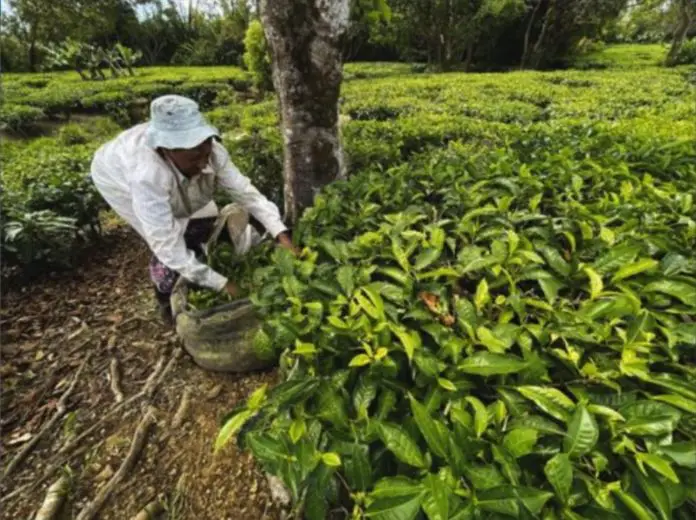
The Taste of Revival
During recent years, the tea sector has been experiencing a period of revival. The government, has tried to turn the tea sector into a sustainable one since 2015. In order to do so, authorities have implemented multiple measures to help the sector grow. From measures to help stimulate production to guidance offered to planters, many options have been explored to help the tea sector evolve and bring young people in.
Therefore, the overall area under the cultivation of tea has increased from 574 hectares in 2015 to 685 hectares in 2021. Tea production has also increased during the past years between 2015 and 2019, by 22.4%. And, in 2020 the amount of tea produced stood at 1,083 tons while in 2021 it grew up to 1,097 tons.
Untapped Potential
The Ministry of Agro-Industry and Food Security following the 2016-2020 strategic plan took the decision to focus on the revitalization of the tea sector. Because the tea sector, has been recognized has as potential pillar of the local economy.

The tea sector has experienced a rough evolution with the development in 90s when it was being replaced by sugar cane cultivation.
Measures to Help the sector
Measures specially in favor of the tea sector and its planters have been announced in the 2022-2023 budget. These include:
•an increase to the winter allowance,
•an allowance granted as financial compensation for any loss of income during winter periods Rs 2/kg, the offering of agricultural land from the state to tea planters,
•the opening of a tea nursery at La Brasserie in order to help produce tea seedlings, additional help both financial and non-financial will be given to planters,
•the purchase of equipment for harvesters with a one-time grant,
•a sum of Rs 6 million to help in the rehabilitation of roads and construction of drainage systems in tea plantations of Nouvelle-France, Grand-Bois and Bois-Chéri and
•10,000 tea seedlings will be given at the cost of Rs 10 per unit, which was then reworked to be donated for free to planters
In addition, the ministry has requested the Food and Agriculture Organization (FAO) to perform a study. This study will help determine the reasons why the tea sector went into a decline and what actions can be taken to help it back on track. The results of this report should help the Ministry in its objective of revitalizing the Mauritian tea sector. Therefore creating a niche market for tea from the country in the global tea market.
The findings
The key findings of the study include activities and improvements such as:
•the need to strengthen frameworks such as institutional, legislative and regulatory,
•there is a need to develop a climate change adaptation plan,
•there is a shortage of labor and the ageing of tea planters,
•there is a lack of standards for tea and product innovation,
•there are old infrastructures which are high on processing cost and rely heavily on electricity and fossil fuel,
•poor technological adaptation,
•and the need to build an appropriate and strong tea brand on the natural capital of the island
Support provided by the Small Farmers Welfare Funds (SFWF)
The Small Farmers Welfare Fund (SFWF), under the backing of the Ministry of Agro-Industry, maintain its objectives of promoting the economic and social well-being of small farmers and their families. Some of the social protection programs offered by the SFWF to small tea growers include a sector support program. Introduced around 2016-2017 the program helped freely provide fertilizers, phosphorus, potassium in September, calcium, and ammonium nitrate in January for small planters.
Every registered small tea growers are given fertilizers free of charge. This will help individuals such as free growers, cooperative growers and sharecroppers to fertilize their fields, thus increasing their productivity. Fertilizers such as NPK (22:7:7) and CAN fertilizer at 175 kg/acre and 100 kg/acre respectively are provided to about 1,100 registered small tea growers every year. This measure has helped significantly in the increase of yield from 4000 tons/arpent in 2015 to 7000 tons/arpent in 2018.
The other measures introduced include
The Planter Protection Scheme, which will help eligible tea growers with Rs 6,000/arpent if their tea plantations are ever damaged by natural calamities (drought, cyclones, etc.). This will help provide small planter a safety net against losses.
The Mini Tea Harvester Scheme (MTHS), which will allow every planters to acquire a Mini Tea Harvester. The goal of this scheme is to help small scale tea growers to shift into capital-intensive production systems which will then help reduce the impacts of constraints such as labor shortage. Thus, increasing their productivity.
On average, the quantity of leaves harvested while hand picking is around 40 kg/5hrs and 60 kg/5hrs when hand scissor picking. With a Mini Tea Harvester, 200 kg per five working hours can be picked daily.
In addition, necessary training will be given to tea farmers who acquire the MTH so that they can operate it safely. So far, 56 Mini Tea Harvesters have been delivered and 79 others are expected to be delivered in January 2023.
The Road Mending Scheme with a funding of Rs 6 million in 2022-2023 budget will be used to rehabilitate roads and construct appropriate drainage within tea plantations in Nouvelle-France, Grand-Bois and Bois-Cheri.


